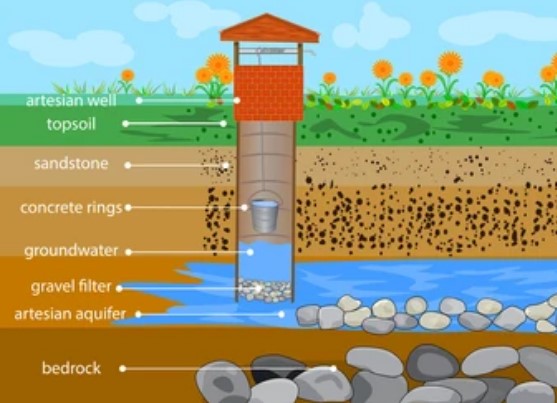Water is one of the most abundant and essential elements in our environment. Water is necessary for all kinds of life to exist, as they rely on water to survive.
Different groups throughout the globe are raising people's awareness about water issues now that they understand its significance. Thus, the 22nd of March is observed as World Water Day to raise awareness about the significance of water conservation. In line with this, the year 2003 was officially acknowledged as the International Year of Freshwater.
By engaging in such events, we disseminate the message of conserving water's natural resources and make people aware that there is no life on Earth without water. Additionally, we subscribe to the philosophy that you have a future only if there is water.
Before discussing why water is becoming scarce, we must determine how much water is available for human use on Earth.
Availability of usable water
Due to the existence of water in the form of seas and oceans, a photograph of Earth seen from space would reveal a blue hue of earth. This is because about 71 percent of the earth's surface - a major portion of Earth - contains water. 97.4 percent of the water on Earth is found in the seas and oceans, yet it is unfit for human consumption. Freshwater in useable form makes up just a tiny portion of the total water on the planet.
Most of us think that there is an abundance of water on the planet. However, none of this water is acceptable for human consumption, nor is it suited for plants or other kinds of life.
Different sources of water
Water is available from three types of sources, which are as follows:
Snow: Snow or ice (solid) appears on the planet in the form of polar ice caps, glaciers, and snow-covered mountains. These are the primary water sources on Earth.
Seas, lakes, rivers, and underground water: Water is found in seas, lakes, rivers, and even underground in the top layers of the planet.
Rain: In the form of water vapor, clouds (gas) exist in the atmosphere. On condensation, water transforms into droplets and falls to the earth's surface as rain.
These kinds of water are continuously recycled, and the quantity of water on the planet is kept at a constant level. The majority of metropolitan places have a water delivery system, while rural regions rely on resources such as rivers, lakes, ponds, and handpumps.
Groundwater as an important water source

Wells, tube wells, and handpumps are the primary water supplies for many people. The water contained inside these sources is groundwater. The higher level of subterranean water fills all the crevices in the soil and rocks to produce a water table.
The higher boundary of groundwater is known as the water table. It reflects the depth of water at a certain location. The water table rises and falls based on the amount of rainfall that penetrates into the groundwater and the quantity of groundwater extracted for agriculture and industries.
Infiltration is the process through which rainwater seeps into groundwater. The groundwater is therefore replenished via this method.
At some locations, groundwater is held between layers of crystalline rock under the water table. The groundwater can be extracted from this reservoir using handpumps and tube wells. However, these locations may run out of water if they're utilized too often.
Depletion of the groundwater
Rainwater seeps into groundwater reservoirs and replenishes the water supply. As long as we withdraw the same quantity of water as is replaced by natural resources such as rain, the water table is not altered.
However, a lot of reasons contribute to the rapid depletion of the water table, which is really a cause for worry for all of us. Population growth, industries, and agricultural activities are frequent causes influencing the water table.
Lack of rain, cutting down trees, and reducing the amount of land available for seepage all contribute to a potentially depleted water table.
Growing Population
With a growing population comes a greater need for potable, non-potable, and sanitary water supplies. We also need additional homes, workplaces, stores, and highways. This will need additional building work, and the construction process itself consumes a great deal of water, which is taken from groundwater. In addition, there is less space where rainwater may sink into the earth.
Consequently, population growth raises water use that leads to disturbingly low levels of groundwater depletion (in many cities).
Industrialization on the rise
Water is used by every industry and almost everything we use requires water at some point in its manufacturing. The number of industries continues to increase and the majority of industrial water is extracted from groundwater, which leads to water depletion.
Agriculture-related pursuits
Population growth needs a greater quantity of food to satisfy demand and this increases the burden on agricultural methods. Farmers in our nation rely on rainwater, canal water, and groundwater for irrigation. Canals are only found in a few locations but since rainfall is usually unreliable, canals frequently lack water. Therefore, farmers irrigate using groundwater which leads to groundwater depletion.
Deforestation
Deforestation has happened on a massive scale to accommodate a rising population, cultivate food for them, and create room for industry. A substantial quantity of flora has also been damaged by our animals' overgrazing.
A greater amount of water may be absorbed by the soil and runoff is slowed as a result of the green cover provided by vegetation. Destruction of trees and vegetation gets in the way of the natural mechanisms through which seepage occurs and groundwater is refilled, resulting in water depletion.
To know more about water sources and the reasons behind water depletion, see our videos which explain them.
FAQs:
Q1. Why is our planet Earth dubbed as the blue planet?
Ans. Our world has an abundance of water and approximately two-thirds or 71% of the Earth's surface is covered by water. Thus, the Earth is known as the water planet or the blue planet.
Q2. How much water is available for consumption and other uses?
Ans. About 97 percent of the world's water is found in seas and oceans, which contain numerous dissolved salts that make the water salty. Other types of water include ice caps, glaciers, and groundwater. Freshwater originates from underground, rivers, and lakes and only 0.006% of the water on our planet is usable.


